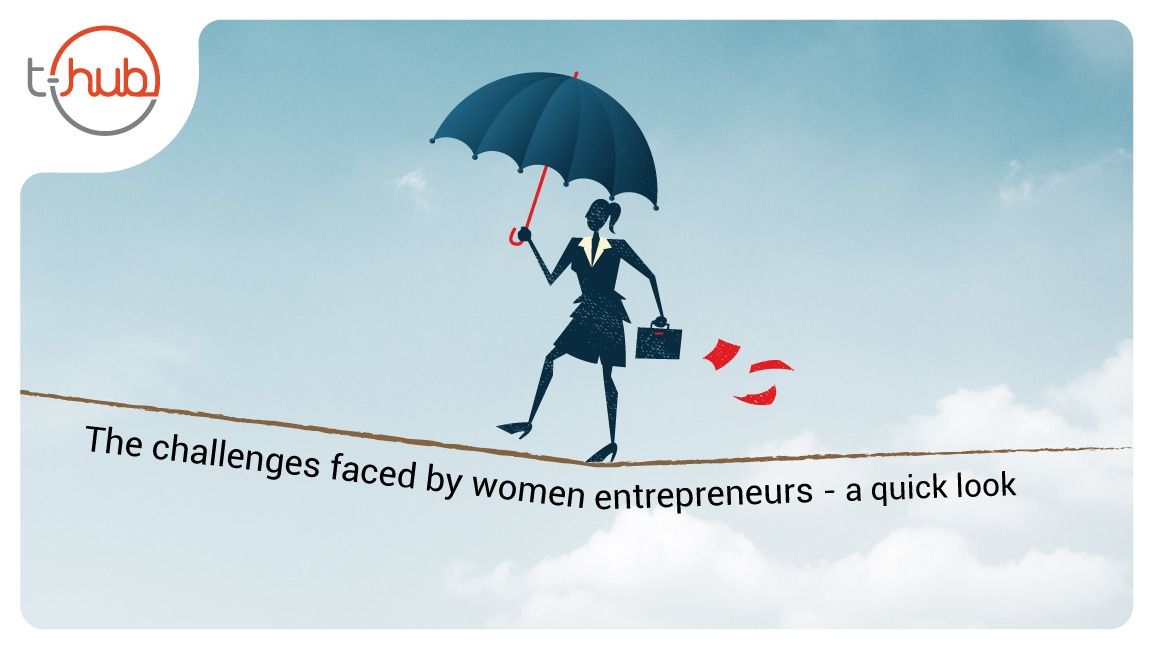Through innovation and scalable technology, Indian startups have offered progressive solutions and brought about socio-economic development. However, there are still hurdles to cross, especially when it comes to gender roles. Despite being the third-largest startup ecosystem in the world, only 14 per cent of India’s startup businesses are run by women.
In fact, regardless of gender, starting a business is a daunting prospect, which includes generating funding, exceeding customer expectations, penetrating the market, hiring qualified employees and dealing with a complex regulatory environment. However, women entrepreneurs face additional barriers. Let’s look at some of them.
Overcoming barriers to entry
Overcoming an unconscious gender bias: Unconscious gender bias results in a cursory assessment of an individual and often feeds into decision-making that is unfavourable towards women. An industry survey found that Indian women business owners struggle with less favourable conditions, pronounced cultural biases and a lack of business resources such as finances, capital, training and development. Take the case of Safeducate, which was co-founded by Divya Jain, and backed by her father-in-law. Despite Divya being the CEO of the company, she found that investors would ask to meet with her father-in-law or husband instead.
Dealing with low confidence about business skills: The stereotype that “business is not a woman’s world,” enforces the idea that men are more competent in financial matters. In several cases, women entrepreneurs can sense hesitation when interacting with business partners. Take the case of Amruta Desai, who had difficulty convincing investors about her commitment to Campus Time, a social networking site for universities and colleges. Investors were not ready to believe that a woman entrepreneur had the ability to build a billion-dollar tech business. The inherent prejudice was that women run businesses such as tailoring shops, bakeries, eateries, and family businesses, but not successful tech startups.
Accessing finance: One of India’s most successful women entrepreneurs Kiran Mazumdar-Shaw faced a great deal of scepticism and was considered ‘high-risk’ by potential funders for her biopharmaceutical company, Biocon. Even today, women entrepreneurs may get their foot in the door but are perceived differently from men. Investors also prefer pitches presented by men as compared to those by women, despite identical content. Also, as Indian women rarely own property, they find it difficult to get loans, and about 79 per cent of women-owned ventures are self-financed.
Building networks and relationships: A male dominated ‘bro culture’ is one of the most-cited barriers to women’s leadership. Shrishti Sahu, Founder and Director of Aqaya, visited the Silicon Valley, the centre of startups, and found that even here Old Boys networks are universal, and women entrepreneurs lack proper networking opportunities. Lack of access to mentors and investors weaken India’s support system for women entrepreneurs.
Finding family support and childcare: Facebook’s Chief Operating Officer Sheryl Sandberg once famously said that the most important career choice that women make is whom they choose to marry. And she was right. The other side of the “business is a man’s domain” coin is that women are expected to prioritise family over everything else. Juggling between home and work is not easy, and family support is a core success factor for Indian women entrepreneurs. While some get help, supportive families are not the norm. Women entrepreneurs who are mothers encounter further difficulties with the lack of maternity benefits and options for childcare.
Ensuring safety at work and access to public spaces: Finally, safety at the workspace and during daily commutes is an issue in India. Take Delhi in particular, one of India’s four global startup cities, which has a poor record on this parameter. Moreover, the perception of danger reinforces social norms, which restrict women’s mobility and thereby, their economic participation and freedom.
Bridging the gender divide
A recent study showed that measures to close the gender gap could lead to a 6.8 per cent gain in India’s GDP. Overcoming these challenges requires not only the determination of existing and aspiring women entrepreneurs, but also changes in structural factors in the external environment. So, how can we achieve entrepreneurial empowerment for these women with an idea for change?
Providing equal access to education and encouraging women to use their acquired skills by joining the workforce must be a priority. Policies that include more women in senior and leadership positions are needed as they will help women gain experience and knowledge, which, in turn, will enable them to start their own businesses.
Changing unconscious bias is no easy task. Women entrepreneurs must deal with negative attitudes by being conscious of the bias themselves while finding ways to minimise it. Revathy Roy exemplifies this spirit well. A serial entrepreneur, she has empowered urban poor women and is transforming gender roles by pioneering two first all-women enterprises — Forsche and Hey Deedee. Inspiring stories like hers prove that business can be a woman’s world, strengthening the confidence of aspiring women entrepreneurs.
India’s women entrepreneurs need better access to finance and networks. Organisations, such as NITI Aayog’s Women Entrepreneurship Platform, Catalyst for Women Entrepreneurship and the accelerator for women in technology initiated by Zone Startups India provide dedicated support for women entrepreneurs. They connect them with relevant people in their industry and foster networking among the women entrepreneurs themselves so that they can learn from each other’s experiences. Moreover, they assist in fundraising by teaching women how to pitch and convince potential investors.
Companies also need to invest in creating a more inclusive and safe work environment to attract and retain talented women. A change in thinking is also required as domestic duties should not be seen as exclusively a woman’s responsibility. Furthermore, improving childcare and cultivating social acceptance would help women business owners combine their entrepreneurial pursuits and family responsibilities.
Harnessing the full potential of women entrepreneurs can promote innovation, job creation, economic growth and social development. In the past decade, it has been empowering to see women in high positions that would traditionally belong to men. As time passes by, we hope to have more women entrepreneurs rising and using the opportunities available for all women to innovate, inspire, and empower.






